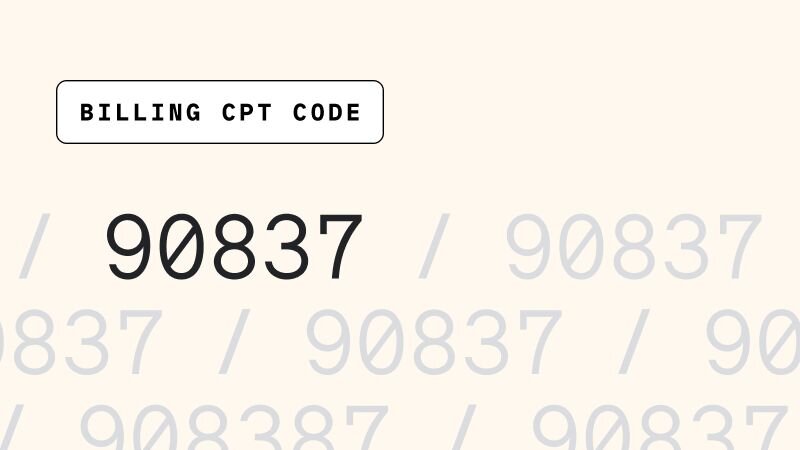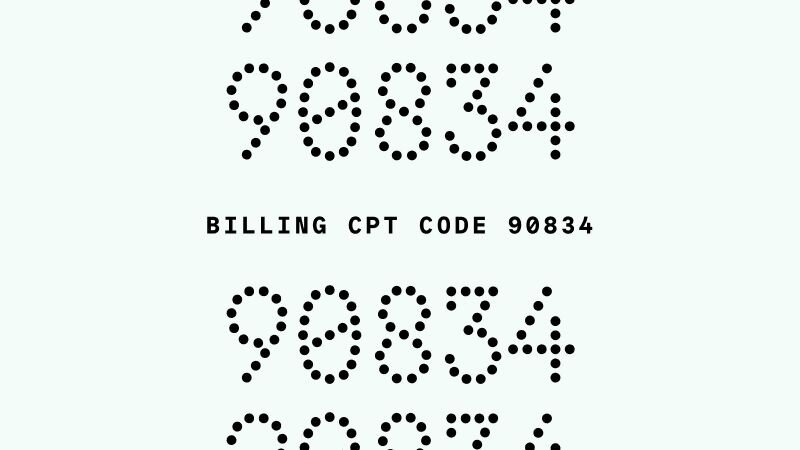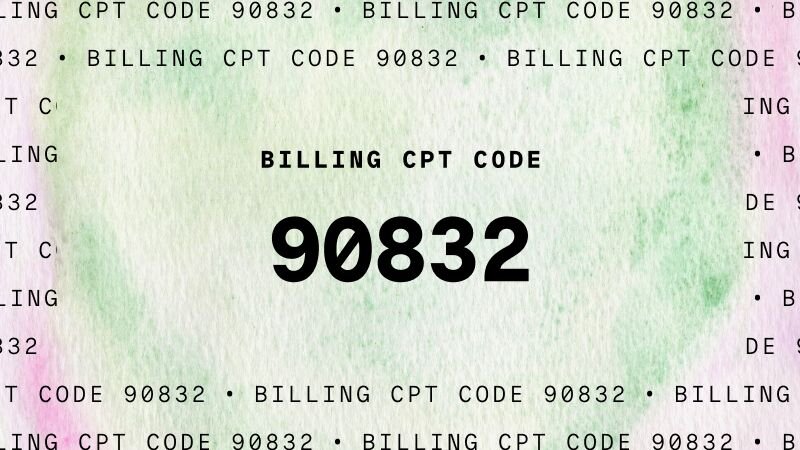
The 10 most common CPT codes (and how to use them)
Understand the ins and outs of CPT codes to help make documentation and billing more efficient — and give you more time to focus on other areas of your practice.

The two most important coding systems in medical billing are CPT codes and ICD-10 codes. Both have their own distinct purpose, and you’ll need to understand each of them if you’re working with insurance.
As a therapist, you’re tasked with applying a variety of best practices to your work — and not all of them involve providing therapy to your clients. After the therapy session ends, you need to get paid, which requires an understanding of medical coding.
The two most important coding systems in medical billing are CPT codes and ICD-10 codes. Both have their own distinct purpose, and you’ll need to understand each of them if you’re working with insurance.
Need a refresher on these two coding systems involved in billing payers? Read on for everything you need to know about CPT codes vs. ICD-10 codes.
CPT codes and ICD-10 codes are two different coding systems in medical billing, which includes psychotherapy. Essentially, these codes tell the payer what services and treatment you should be paid for.
The two codes go hand in hand in conveying your work in a therapy session, but they play a different role in the billing process. While ICD-10 codes indicate your client’s diagnosis, or why you’re billing the payer, CPT codes convey the service for which you’re billing.
For example, you’d use an ICD-10 code to communicate you’re treating a client with generalized anxiety disorder. A CPT code, on the other hand, would represent the treatment for that client’s condition, such as a 60-minute psychotherapy session.

Understand the ins and outs of CPT codes to help make documentation and billing more efficient — and give you more time to focus on other areas of your practice.
ICD stands for International Classification of Diseases. Each ICD-10 code includes alphanumeric characters that represent specific diseases, injuries, and medical conditions, including psychological diagnoses.
“The goal of ICD-10 codes is to ensure that diseases are categorized similarly, regardless of geo-location, to make billing more efficient.” says Innocent Turner, clinical strategy and quality manager at Headway. “As mental health providers, we use the ICD-10 codes for classification of mental health disorders.”
The World Health Organization developed ICD-10 codes in 1994 to streamline billing for medical professionals, but also to make it easier to track disease activity around the world.
Understanding the purpose of ICD-10 codes, and how to find them, can make your billing process easier (which means more time spent on other things).
ICD-10 codes are updated twice annually, in April and October. If you rely on memory for billing, it’s important to update your codes when they’re released. Otherwise, you may create more work for yourself in the billing process.
It’s fairly simple to search for ICD-10 codes online. You can search for an ICD-10 code via the World Health Organization or other ICD-10 indexing websites.
CPT codes, or Current Procedural Technology codes, are billing codes represented with five-digit numbers. Rather than identifying a client’s mental health diagnosis like ICD-10 codes, they represent the specific service you provided to a client.
The American Medical Association (AMA) developed these codes for efficiency in medical billing. CPT codes are considered the standard medical coding system whether you’re billing private or public insurance, or if you’re creating a superbill for a client.
As healthcare evolves, CPT codes change, too. On January 1st of each year, CPT codes are added and updated. Again, it’s a good idea to stay on top of these changes so you don’t mistakenly use an old or incorrect code when you’re billing a payer.
You can often use your electronic healthcare system (EHR) to find the most recent CPT code. You can also find CPT codes through the Centers for Medicare and Medicaid Services.
It’s important to note that the American Medical Association trademarks CPT codes, so you or your practice will need to pay a fee and obtain a license to use them for billing.
While administrative tasks like billing for therapy sessions can be time-consuming — and sometimes can come with a learning curve — understanding these coding best practices can help ensure accurate billing (and timely payment).

The 90837 CPT code is often understood to be the standard of a therapy session among providers. However, insurers have a tendency to flag 90837 more frequently than other codes.

The “45 minute” session is a core element of mental health care, so it’s vital that every provider knows how to apply the 90834 code to their work.

If your client demonstrates a clinical need for shorter therapy sessions — or you need to end a session earlier than planned — 90832 might be the right way to bill.